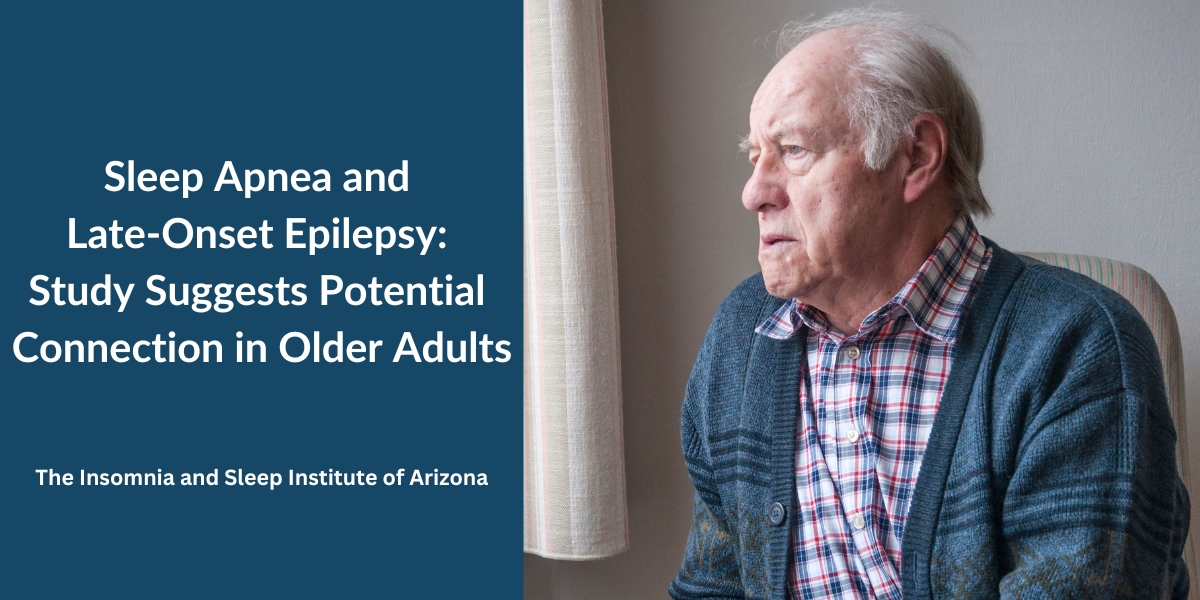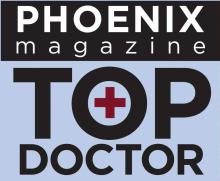Sleep apnea disrupts sleep, causing frequent breathing pauses that leave you gasping for air. It’s a common condition but can be especially challenging for older adults. Adding to the concern, epilepsy, which causes seizures, also becomes more likely as we age. A new study suggests a surprising connection between these two conditions. Could sleep apnea raise the risk of epilepsy in older adults?
What is Sleep Apnea?
Sleep apnea is a common type of sleep disorder where there a repetitive pauses in breathing or shallow breathing throughout the night. These pauses can last seconds or even minutes and may occur multiple times during sleep.
Surprisingly, there are over 900 million people worldwide who are diagnosed with sleep apnea. In the United States alone, millions are estimated to have it. But only a few receive a diagnosis.
The US isn’t alone in these high rates. South Korea, for instance, sees similar numbers despite having lower obesity rates, suggesting factors beyond weight can contribute to sleep apnea.
How Sleep Apnea Happens?
The muscles in your throat relax during sleep. In some cases, this relaxation can narrow or even completely block your airway. This blockage disrupts your breathing, and your body is forced to jolt you awake briefly to resume respiration. The sudden awakening is necessary to keep you breathing. But it can also severely fragment your sleep, preventing you from reaching those deeper, more restorative stages.
Symptoms
Many symptoms can be spotted when someone has sleep apnea. First, loud snoring is a common indicator, though not everyone who snores has sleep apnea. However, if your bed partner notices you gasping for air or experiencing periods where you stop breathing altogether, these are strong signs, so it is advised to speak with a doctor.
You might also experience excessive daytime sleepiness even if you think you got a full night’s rest. This can bring negative factors and can significantly impact your focus, energy levels, and overall well-being. Other symptoms include headaches, lack of focus, and a persistent feeling of dryness in your mouth.
Certain populations are also more susceptible to sleep apnea. Women going through menopause, for example, experience hormonal changes that can increase their risk. Additionally, as we age, the risk of sleep apnea rises. In fact, sleep apnea affects up to half of people over 65 to some degree.
What is Epilepsy?
Epilepsy, affecting millions around the world, is a brain disorder where there is a recurrent seizure. The World Health Organization estimates 50 million people globally live with epilepsy, and close to 3 million adults in the U.S. have active epilepsy. While it can be a significant burden, with healthcare costs in the U.S. reaching an estimated $24.5 billion annually in 2019, there’s also a lot of support and information available.
How Does Epilepsy Happen?
In a healthy brain, nerve cells communicate with each other through electrical signals. But when it comes to epilepsy, these signals become disrupted which will then cause surges of uncontrolled electrical activity. These surges are what trigger seizures, which can manifest in many different ways.
Of course, seizure symptoms are not the same for everyone. Some people may experience a temporary lapse in awareness. Others might have muscle twitches or jerking movements. Seizures can also affect sensations, emotions, and behavior.
It’s important to remember that having a single seizure doesn’t necessarily mean you have epilepsy. There may be other causes. But, doctors typically diagnose epilepsy only after someone has had at least two unprovoked seizures. This means there wasn’t a clear cause, such as low blood sugar or head injury.
A Recent Study on Sleep Apnea and Epilepsy in Older Adults
The study, titled “Sleep Apnea, Hypoxia, And Late-Onset Epilepsy: The Atherosclerosis Risk In Communities Study,” was published in September 2023 by Christopher M Carosella and colleagues. They tried to find a connection between sleep apnea, sleep patterns, and the development of epilepsy later in life (late-onset epilepsy or LOE) in older adults. Moreover, using the Atherosclerosis Risk in Communities (ARIC) Study, they aimed to solidify the connection between the two variables.
How They Did It?
They identified cases of late-onset epilepsy (LOE) among ARIC participants by analyzing Medicare claims data. Researchers also looked at sleep study information (polysomnography), which they collected from over 1300 ARIC participants who were part of the Sleep Heart Health Study between 1995 and 1998. Additionally, they considered demographic and other health-related data from the ARIC Study.
For a better understanding of the risk of developing LOE later in life, the researchers decided to use a statistical method called survival analysis, factoring in death as a competing event. They further investigated the association between self-reported sleep apnea diagnosed between 2011 and 2013 (obtained from a larger group of 2672 ARIC participants) and the subsequent development of LOE.
What They Found?
Through their research, it was revealed that participants who experienced significant drops in blood oxygen levels (below 80%) during sleep in their late middle age were more likely to develop LOE later in life. This association remained even after accounting for factors like high blood pressure and other health conditions.
Not to mention, the apnea-hypopnea index, a measure of breathing interruptions during sleep, wasn’t directly linked to LOE risk. Self-reported sleep apnea diagnosis in later years (2011-2013) also correlated with an increased risk of developing LOE.
What This Means?
The study suggests that sleep apnea and the drop in blood oxygen levels it can cause during sleep are both probable risk factors for late-onset epilepsy, even after accounting for other health conditions. This information is important because both sleep apnea and hypoxia are potentially modifiable factors. Indeed, treatment for sleep apnea can significantly improve oxygen levels during sleep, potentially reducing the risk of LOE.
We recommend that if you are experiencing symptoms of sleep apnea, such as snoring, gasping during sleep, or daytime fatigue, schedule a consultation and speak to your doctor. Getting early diagnosis and treatment of sleep apnea can improve your sleep quality and overall health and also potentially lower your risk of developing other health complications, including late-onset epilepsy.
One caveat is that this is correlational research, so it can be difficult to obtain the level of certainty we see with experimental research. Experiments are not feasible in many circumstances, including this one, because you can’t randomly assign people to have sleep apnea. They either have it or they don’t. Correlational research means the researchers are identifying things that occur together.
This is actually how we learned smoking was the cause of lung cancer, so the method has merit. In the case of lung cancer, researchers showed that the more people smoked, the more likely they were to develop the cancer. We know that people who have sleep apnea are more likely to have late-onset epilepsy, but we don’t know with certainty that sleep apnea is the cause. It’s possible, for example, that another common factor, such as obesity, causes both conditions to co-occur.
The analysis does account for such factors but it’s impossible to completely rule out alternative causes with correlational research. So, for maximum benefit, we recommend (a) treating your sleep apnea and (b) mitigating the causes of your sleep apnea because any of them could be the true cause of late-onset epilepsy.
Nonetheless, this research is a stepping stone in understanding the link between sleep apnea and LOE. There may be a need for more research, but this study highlights the importance of prioritizing sleep health and managing sleep apnea for better overall well-being.
Treatment Options for Sleep Apnea and Epilepsy in Older Adults
Many seniors are experiencing a decline in their sleep quality. This can be due to several factors. But the two most common are sleep apnea and epilepsy. Luckily, there are effective treatments available for both conditions:
Addressing Sleep Apnea:
- Lifestyle Modifications: Often called the first line of defense. These changes aim to improve overall health and airway function. Changes such as losing weight, quitting smoking, and exercising regularly can improve sleep apnea severity. What’s more, maintaining a consistent sleep schedule and avoiding heavy meals before bed can promote better sleep quality.
- CPAP Therapy: The “gold standard” for sleep apnea treatment, CPAP (Continuous Positive Airway Pressure) uses a machine to deliver a steady stream of air through a mask worn during sleep. It is a safe and non-invasive treatment. It gives a gentle pressure that keeps the airways open, preventing breathing interruptions.
- Oral Appliances: These custom-fitted mouthpieces work by gently repositioning the jaw or tongue to widen the airway. While not as effective as CPAP for severe cases, oral appliances can be a good alternative for some older adults who find CPAP uncomfortable.
Managing Epilepsy:
- Antiepileptic Drugs (AEDs): These medications are the mainstay of epilepsy treatment. Different AEDs work in various ways to control seizure activity. Your doctor will determine the most suitable medication and dosage based on your specific epilepsy type and medical history.
- Surgery: In some cases, surgery may be an option. Particularly for patients with a well-defined seizure origin in the brain. It can be performed in minimally invasive procedures or targeted brain surgery to remove or disrupt the seizure-causing area.
- Neurostimulation Devices: Newer therapies like vagus nerve stimulation (VNS) involve implanting a device that delivers electrical pulses to the vagus nerve. This can help regulate seizure activity.
It’s important to remember that both sleep apnea and epilepsy can benefit from a collaborative approach. Treating sleep apnea can improve sleep quality, which in turn, can help regulate seizures. Conversely, well-managed epilepsy may lead to better sleep and possibly reduced sleep apnea severity.
This information is intended for general knowledge only. Always consult with a doctor to discuss the most appropriate treatment plan for your specific needs.
Preventing Sleep Apnea in Older Adults
Sleep apnea and epilepsy are fully preventable. But, there are steps older adults can take to reduce their risk:
- Maintain a Healthy Weight: Excess weight around the neck can narrow your airway which can increase the risk of sleep apnea. Focus on maintaining a healthy weight through a balanced diet and regular exercise.
- Exercise Regularly: Doing physical activities can strengthen muscles, including those that support your airway. Try at least 30 minutes of moderate-intensity exercise. It doesn’t have to be every day but at least try 3 to 5 days in a week.
- Quit Smoking: Smoking irritates the airways and contributes to inflammation. Both can worsen sleep apnea.
- Manage Allergies and Congestion: Nasal congestion due to allergies or a chronic cold can obstruct your airway and increase the risk of sleep apnea. Talk to your doctor about managing allergies and keeping nasal passages clear.
- Practice Good Sleep Hygiene: Creating a regular sleep schedule, establishing a relaxing bedtime routine, and ensuring a cool, dark bedroom environment can all promote better sleep quality and potentially reduce the risk of sleep apnea.
- Avoid Alcohol and Sedatives: These substances relax the muscles that support your airway, potentially worsening sleep apnea. Similarly, aside from damaging the liver, diabetes, and weakening your immune system, frequent drinking of alcohol can also affect sleep. Limit alcohol consumption and consult your doctor about any medications that might affect sleep.
- Sleep on Your Side: Sleeping on your back can worsen sleep apnea by allowing your tongue to fall back and block your airway. Try side sleeping instead.
- Maintain a Healthy Diet: A balanced diet is all about giving your body the various nutrients it needs to function at its best. Trying to eat rich fruits, vegetables, and whole grains can help with weight management and overall health, potentially lowering the risk of sleep apnea.
The tips above can help reduce your risk. Yet, they don’t guarantee complete elimination. So, as mentioned earlier,if you suspect you might have sleep apnea or experiencing symptoms like daytime sleepiness or frequent nighttime awakenings, you should consult a doctor for a proper diagnosis and discuss treatment options.
Fortunately, our team of sleep specialists can help you get the answers and treatment you need, from diagnosis to long-term solutions. Schedule a consultation today and experience the friendly, patient-centered care we’re known for.
The Insomnia and Sleep Institute, will care for you like family. We have a team of experts that is dedicated to providing comprehensive sleep care for adults and children as young as one.
References
Carosella, C. M., Gottesman, R. F., Kucharska-Newton, A., Lutsey, P. L., Spira, A. P., Punjabi, N. M., Schneider, A. L. C., Full, K. M., & Johnson, E. L. (2023). Sleep apnea, hypoxia, and late-onset epilepsy: the Atherosclerosis Risk in Communities study. Sleep. https://doi.org/10.1093/sleep/zsad233
CDC. (2024). Epilepsy Facts and Stats. Epilepsy. https://www.cdc.gov/epilepsy/data-research/facts-stats/index.html
Ernst, G., Mariani, J., Blanco, M., Finn, B., Salvado, A., & Borsini, E. (2019). Increase in the frequency of obstructive sleep apnea in elderly people. Sleep Science, 12(03), 222–226. https://doi.org/10.5935/1984-0063.20190081
Epilepsy. (2024, February 7). World Health Organization; World Health Organization: WHO. https://www.who.int/news-room/fact-sheets/detail/epilepsy
Jehan, S., Auguste, E., Zizi, F., Pandi-Perumal, S. R., Gupta, R., Attarian, H., Jean-Louis, G., & McFarlane, S. I. (2016). Obstructive Sleep Apnea: Women’s Perspective. Journal of Sleep Medicine and Disorders, 3(6), 1064. https://www.ncbi.nlm.nih.gov/pmc/articles/PMC5323064/
Kobau, R., Luncheon, C., & Greenlund, K. (2023). Active epilepsy prevalence among U.S. adults is 1.1% and differs by educational level—National Health Interview Survey, United States, 2021. Epilepsy & Behavior, 142, 109180–109180. https://doi.org/10.1016/j.yebeh.2023.109180
UpToDate. (2024). Uptodate.com. https://www.uptodate.com/contents/clinical-presentation-and-diagnosis-of-obstructive-sleep-apnea-in-adults/abstract/10
UpToDate. (2024). Uptodate.com. https://www.uptodate.com/contents/clinical-presentation-and-diagnosis-of-obstructive-sleep-apnea-in-adults/print





